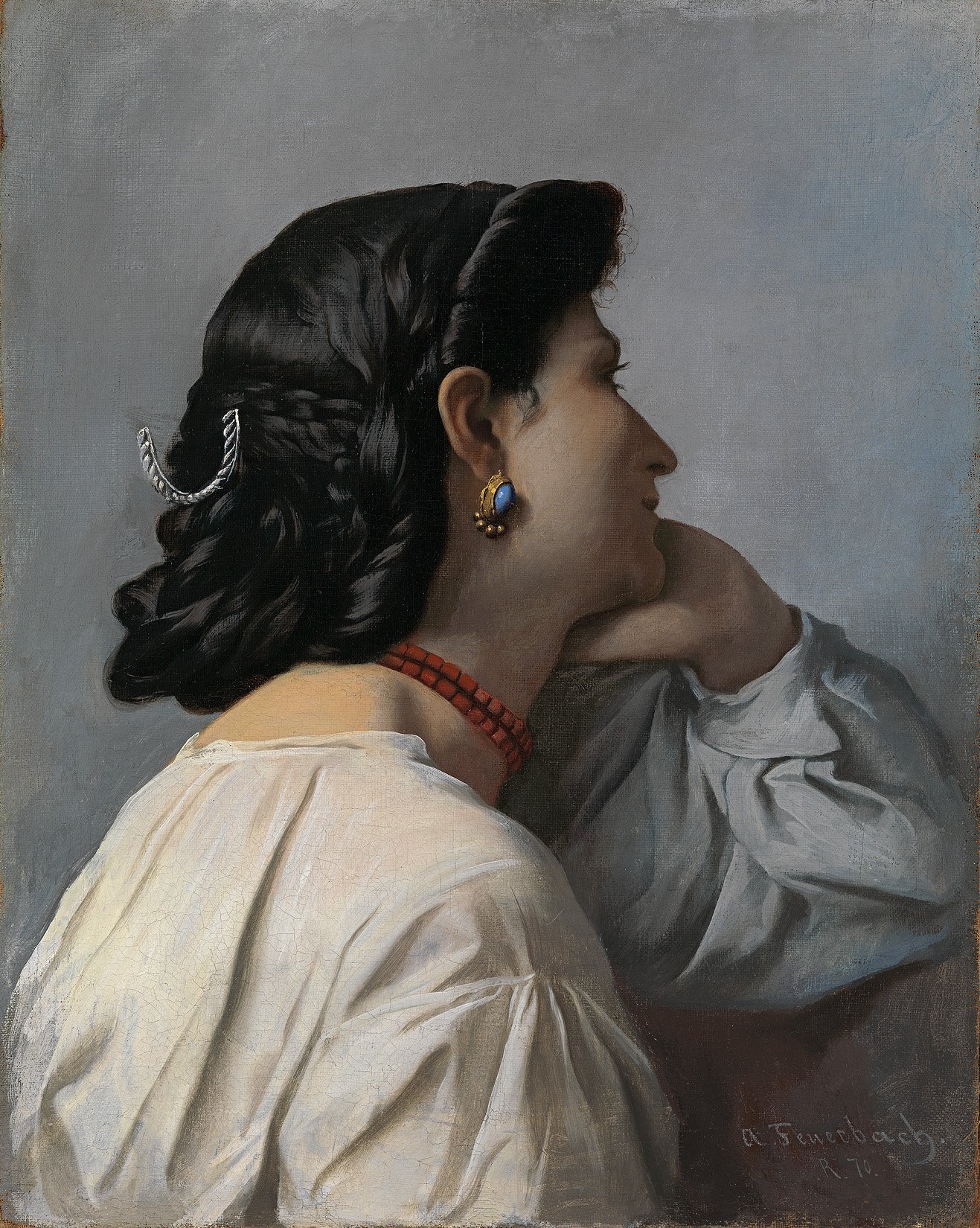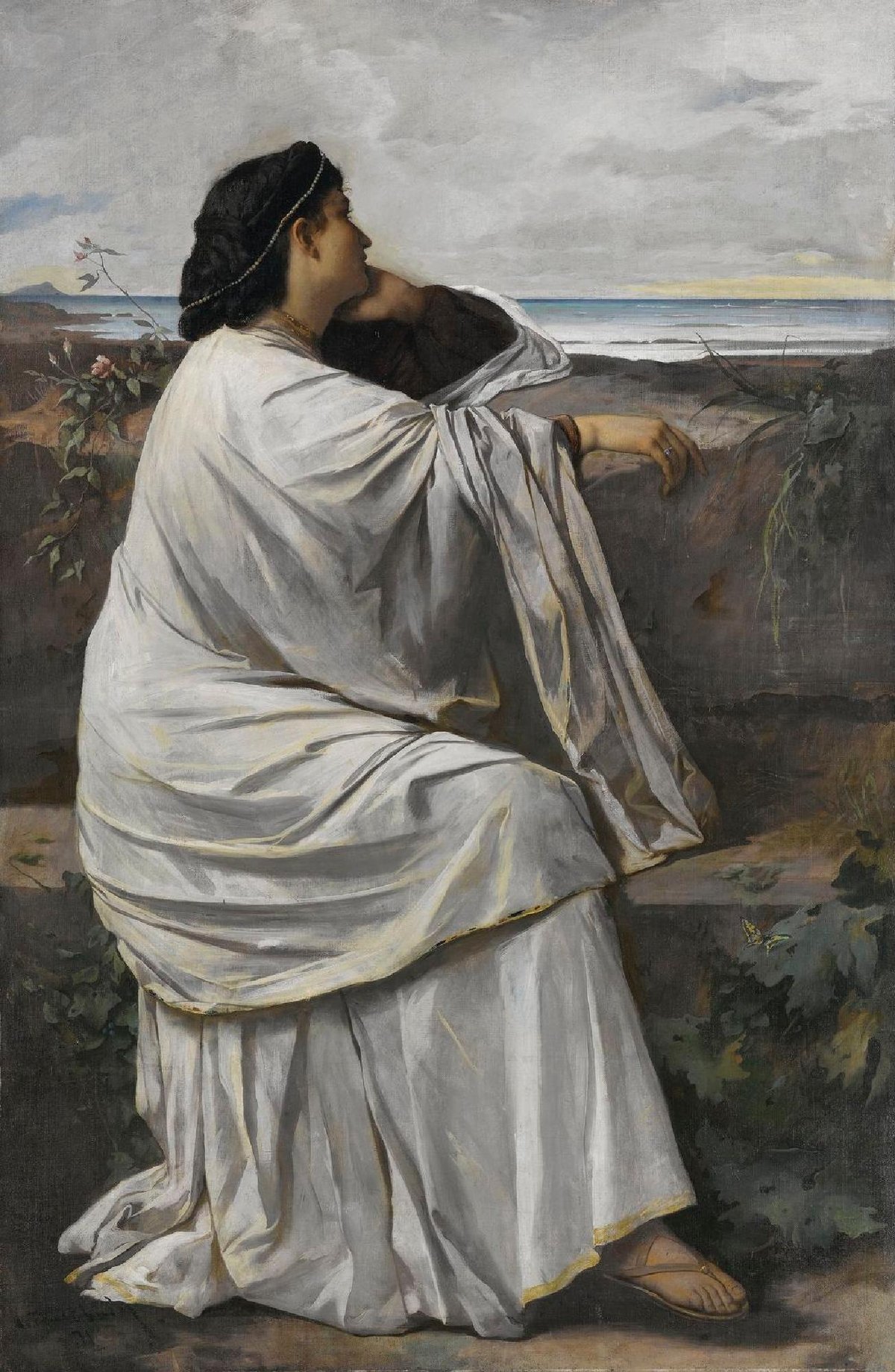Anselm Feuerbach
Iphigenia, 1870

Anselm Feuerbach
Iphigenia, 1870
Kunst Museum Winterthur, Stiftung Oskar Reinhart, Ankauf, 1952
Foto: SIK-ISEA, Zürich (Philipp Hitz)
According to Greek mythology, Iphigenia, Agamemnon’s daughter, was to be sacrificed to the goddess Artemis. However, the goddess saved her from death and banished her to Tauris, where she had to serve as a priestess. The German artist Anselm Feuerbach was familiar with the classical texts and he also attended a performance of Christoph Willibald Gluck’s opera Iphigénie en Tauride in Munich. Above all, however, it was Goethe’s 1787 treatment of the story that was decisive for Feuerbach's portrayal. It was through Goethe’s drama that Iphigenia became a symbol of yearning for Greece.
In addition to two large full-length paintings showing Iphigenia seated before a landscape on the seashore, Feuerbach also painted small-format pictures such as the Winterthur version. All the works depict an enigmatic beauty in antique garb, whose gaze wanders off into the distance. However, our version of the motif focuses more on the expression and posture of Iphigenia’s head. In her forlorn profile, her head with its dark, strong hair and colourful jewellery contrasts clearly with the neutral background. Her intimate, yearning expression reveals a concentration on her own thoughts, a strongly introverted perspective. This gives our Iphigenia an almost private aspect. The artist himself aptly described the vacillating state of his figure: «The painting was created in a moment of contemplation, without following Euripides or Goethe, but simply with the depiction of Iphigenia sitting on the seashore, longing for the land of the Greeks with her soul».
Feuerbach was the most literary painter among the German Romans, as the community of artists living in Rome in the late 18th and 19th centuries is called. In contrast to the seemingly mundane myths of his fellow artist Arnold Böcklin, Feuerbach devoted himself to what could be described as «high mythology». The story of Iphigenia is one of the central themes in his work. It occupied him for almost twenty years.

Anselm Feuerbach, Iphigenie, 1871
Staatsgalerie Stuttgart, acquired 1872
Public Domain Mark 1.0 - Free from known copyright restrictions worldwide


